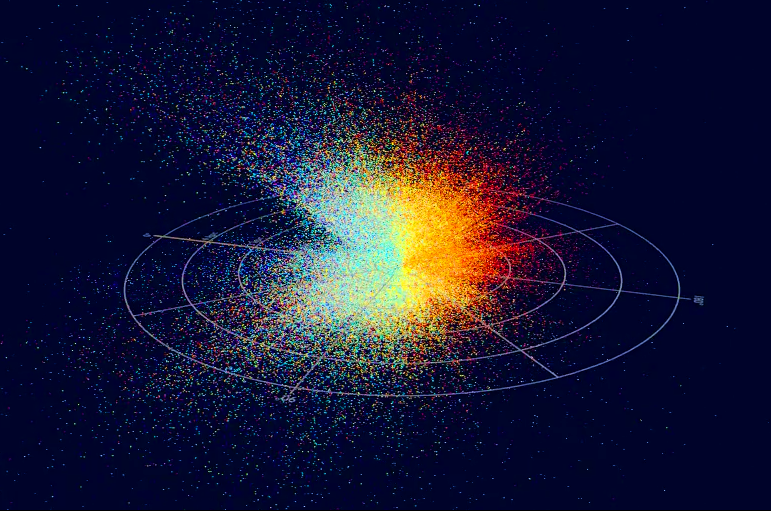The Dynamic Duo: RAVE complements Gaia

The new data release of the Radial Velocity Experiment (RAVE) is the fifth spectroscopic release of a survey of stars in the southern celestial hemisphere. It contains radial velocities for 520 781 spectra of 457 588 unique stars that were observed over ten years. With these measurements RAVE complements the first data release of the Gaia survey published by the European Space Agency ESA last week by providing radial velocities and stellar parameters, like temperatures, gravities and metallicities of stars in our Milky Way.
The velocities and spatial distributions of stars define the galaxy we live in, allowing the characterisation of the formation of the Milky Way. Large spectroscopic surveys provide definitive measurements of fundamental structural and dynamical parameters for a statistical sample of galactic stars and have been very successful in advancing the understanding of our galaxy. The ambitious RAdial Velocity Experiment (RAVE) started in 2003 and was the first survey designed to provide necessary stellar parameters to complement missions that focus on astrometric information like Gaia.
"The Tycho-Gaia stars that were also serendipitously observed by RAVE contain the best proper motions and parallaxes recently released by Gaia and can now be combined with the radial velocities and stellar parameters from RAVE", says Andrea Kunder, lead author of the RAVE data release and astronomer at the Leibniz Institute for Astrophysics Potsdam (AIP), "So these stars can be used to probe the Milky Way more precisely than ever before. Just like wearing glasses allows you to see your surroundings in sharper view, the Gaia-RAVE data will allow the galaxy to be seen with more detail." Among existing spectroscopic surveys, RAVE easily boasts the largest overlap with the Tycho-Gaia astrometric solution catalogue.
The four previous data releases have been the foundation for a number of studies, which have especially advanced our understanding of the disk of the Milky Way. The fifth RAVE data release includes not only the culminating RAVE observations taken in 2013, but also also earlier discarded observations recovered from previous years, resulting in an additional 30,000 RAVE spectra.
For the new data release atmospheric parameters such as the effective temperature, surface gravity and metallicities have been refined using gravities from asteroseismology and high-precison stellar atmospheric parameters. It also contains hypervelocity stars, some extra-galactic stars from the Large Magellanic Cloud, and some extremely metal-poor and metal-rich stars.
"The real treasure is that this is a large, statistically complete sample of local Milky Way stars, that can be used to find trends and anomalies for understanding the formation of the Milky Way," concludes Kunder.
More information: The data release can be accessed via the RAVE website at: www.rave-survey.org
Provided by Leibniz-Institut für Astrophysik Potsdam (AIP)





















